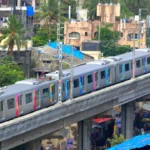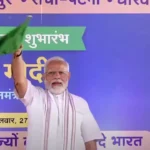Introduction
IndiGo, India’s largest airline in terms of number of flights and market share, recently made a major change in its pricing structure Starting January 04, 2024, the airline waived fuel costs and at the same time, there was a change in seat selection fees. The move aims to remain profitable and adapt to market growth.
Indigo Seat-Selection Charges Update
In response to the removal of fuel charges, IndiGo has increased its ancillary charges for seat selection. Immediate consequences include certain seats being priced at ₹2000. This shift has been reflected on the booking engine since last week and is now updated on the official website.
XL Seats and Pricing Variation
IndiGo categorizes specific seats as “XL,” offering either extra legroom or, in the case of first-row seats, the convenience of deplaning early. Of the 180 or 186 seats in the A320/A320neo aircraft, 18 are designated as XL seats. Importantly, not all XL seats are priced at INR 2000, with rates ranging between INR 1400 to INR 2000, introducing a tiered pricing structure.
Revised Seat Prices
Previously ranging from ₹150 to ₹1500, seat prices have undergone revisions, now spanning from ₹150 to ₹2000. This represents a 33% increase at the upper end. Despite the adjustments, free seats are still available for booking, particularly in the middle towards the rear of the aircraft. Pricing changes are not uniform, with instances of both increases and decreases, providing a nuanced view of the adjustments.
Aircraft-Specific Changes
The alterations in seat selection charges are not uniform across all aircraft in IndiGo’s fleet. For rows 2 and 3 on the Airbus fleet, charges have decreased from ₹450 to ₹400. Conversely, on the A320s, constituting the majority of the fleet, charges for rows 11 and 14 to 20 have increased from ₹250 for an aisle or window to ₹400, even for middle seats that were previously available for ₹150.
Ancillary Revenue and Business Strategy
In the final region, IndiGo mentioned an ancillary revenue of INR 1551 crores. This includes various ancillary offerings which include seat choice, meal choice, and other combinations available on the market. IndiGo’s method includes diversifying revenue streams via ancillary offerings, contributing to its common financial overall performance.
Market Dynamics and Competition
IndiGo commands an impressive 60% marketplace percentage in India and operates on several monopoly or close-to-monopoly routes. With the Air India group, specifically Air India Express, turning into more aggressive, questions get up concerning how the opposition will respond. Will competition boost seat choice fees, or will they use this difference as an advertising tool? IndiGo’s pricing power is currently supported via its expansive community and company offers, giving it a competitive area over competitors like Air India Express, SpiceJet, and Akasa Air.
Competitor Pricing Models
Air India Express follows a similar seat selection fee version, with the MAX aircraft being inducted in a dual-magnificence configuration, similar to Akasa Air however operated as a mono class. Akasa Air, a new entrant in the market, gives seat selection charges starting from INR 150 to INR 1500, with the first row and emergency row marketed as “A .” Additionally, Akasa Air operates some aircraft destined for Jet Airways, presenting a commercial enterprise elegance cabin with 2×2 seating bought at INR 3500 in keeping with the seat.

Government Stance and Regulation
Despite these pricing adjustments, the government has shown reluctance to intrude as the expenses no longer violate Civil Aviation Regulations (CAR), which permit seat selection costs without imposing a cap on charges. IndiGo’s choice to withdraw extra fuel expenses, as oil charges decrease, is seen as a strategic flow to get better potential sales losses through increased seat selection prices.
Conclusion
IndiGo’s recent pricing modifications replicate its proactive technique to evolve to market situations and hold profitability. The changes in seat choice costs, coupled with the elimination of gas fees, show the airline’s strategic reaction to evolving dynamics. The competitive landscape, marked via IndiGo’s dominant marketplace percentage and the emergence of recent gamers like Akasa Air, adds an interesting measurement to the industry’s future trajectory. As the airline enterprise continues to adapt, IndiGo’s capability to balance pricing techniques with consumer delight will play a pivotal position in its sustained success.











Add Comment